CliffsNotes
Chemistry
Quick Review
2nd Edition
By Harold D. Nathan, Ph.D. and Charles Henrickson, Ph.D.
Revised by Robyn L. Ford, M.Ed.
Houghton Mifflin Harcourt
Boston New York
About the Authors
Charles Henrickson received the PhD in chemistry from the University of Iowa with additional work at the University of Illinois and the University of California, Berkeley. He currently is Professor of Chemistry at Western Kentucky University.
Robyn L. Ford is a classroom teacher having taught all levels of chemistry and physics. She currently teaches a dual enrollment course in AP Chemistry and adjuncts at a local university. She is working toward her Ph.D. in Chemistry Education.
Publishers Acknowledgments
Editorial
Acquisitions Editor: Greg Tubach
Project Editor: Kelly D. Henthorne
Technical Editors: Dr. Lester L. Pesterfield, Ph.D., and Dr. Darwin Dahl, Ph.D.
Composition
Indexer: BIM Indexing & Proofreading Services
Proofreader: Henry Lazarek
Wiley Publishing, Inc. Composition Services
Copyright 2013 by Houghton Mifflin Harcourt Publishing Company
All rights reserved
www.hmhbooks.com
No part of this work may be reproduced or transmitted in any form or by any means, electronic or mechanical, including photocopying and recording, or by any information storage or retrieval system without the prior written permission of Houghton Mifflin Harcourt Publishing Company unless such copying is expressly permitted by federal copyright law. Address inquiries to Permissions, Houghton Mifflin Harcourt Publishing Company, 215 Park Avenue South, New York, New York 10003.
The publisher and the author make no representations or warranties with respect to the accuracy or completeness of the contents of this work and specifically disclaim all warranties, including without limitation warranties of fitness for a particular purpose. No warranty may be created or extended by sales or promotional materials. The advice and strategies contained herein may not be suitable for every situation. This work is sold with the understanding that the publisher is not engaged in rendering legal, accounting, or other professional services. If professional assistance is required, the services of a competent professional person should be sought. Neither the publisher nor the author shall be liable for damages arising herefrom. The fact that an organization or website is referred to in this work as a citation and/or a potential source of further information does not mean that the author or the publisher endorses the information the organization or website may provide or recommendations it may make. Further, readers should be aware that Internet websites listed in this work may have changed or disappeared between when this work was written and when it is read.
Trademarks: CliffsNotes, the CliffsNotes logo, Cliffs, CliffsAP, CliffsComplete, CliffsQuickReview, CliffsStudySolver, CliffsTestPrep, CliffsNote-a-Day, www.cliffsnotes.com, and all related trademarks, logos, and trade dress are trademarks or registered trademarks of Houghton Mifflin Harcourt Publishing Company. All other trademarks are the property of their respective owners. Houghton is not associated with any product or vendor mentioned in this book.
Library of Congress Control Number: 2011927302
ISBN 978-0-470-90543-2 (pbk)
eISBN 978-0-544-18078-9
Introduction
You can learn chemistry! Its not impossible if you start right at the beginninglearning about the elements, the building blocks of nature. Thats how you do it in this book. You start with the elements and learn that every element exists as atoms. Learning what these atoms look like and how they join together to form molecules and compounds is the next step, and along the way, you will gain an understanding of the way nature works. From that point, it is a matter of looking at different kinds of compounds and elements and learning how their properties make each of them unique. Youll start with the elements and end by seeing how batteries work, with a bunch of interesting stuff in between.
Although it is useful if you have some general science and math in your background, it isnt mandatory. And even if you choose to overlook most of the calculations in the book, you can still learn a great deal of chemistry. Dont try to go too fast. Take your time; you will learn chemistry!
Why Do You Need This Book?
Can you answer yes to any of these questions?
- Do you need to review the fundamentals of chemistry fast?
- Do you need a course supplement to chemistry?
- Do you need a concise, comprehensive reference for chemistry?
If so, CliffsNotes Chemistry Quick Review is for you!
How to Use This Book
You are the boss here. You get to decide how to use this book. You can either read the book from cover to cover or just look for the information you want and put the book back on the shelf for later. However, here are a few recommended ways to search for topics.
- Look for areas of interest in the books table of contents or use the index to find specific topics.
- Flip through the book, looking for subject areas at the top of each page.
- Get a glimpse of what youll gain from a chapter by reading through the Chapter Check-In at the beginning of each chapter.
- Use the Chapter Check-Out at the end of each chapter to gauge your grasp of the important information you need to know.
- Challenge yourself with the Problems sprinkled throughout the chapters. The answer explanations can be found in the appendix at the back of the book.
- Test your knowledge more completely in the Review Questions and look for additional sources of information in the Resource Center.
- Use the glossary to find key terms fast. This book defines new terms and concepts where they first appear in the chapter. If a word is boldfaced, you can find a more complete definition in the books glossary.
- Or flip through the book until you find what youre looking forwe organized this book to gradually build on key concepts.
Hundreds of Practice Questions Online!
Go to www.cliffsnotes.com/sciences/chemistry-quizzes for hundreds of additional chemistry practice questions to help prepare you for your next quiz or test. The questions are organized by this books chapter sections, so its easy to use the book and then quiz yourself online to make sure you know the subject. Go to CliffsNotes.com to test yourself anytime and find other free homework help.
Chapter 1
ELEMENTS
Chapter Check-In
 Discovering the building blocks of all substances
Discovering the building blocks of all substances Understanding the arrangement of the periodic table
Understanding the arrangement of the periodic table Learning about atomic number and atomic weight
Learning about atomic number and atomic weight
With all the different substances that exist, you may be surprised to learn that they are formed from a relatively small number of elements. For example, carbon is one of 112 known elements. Yet carbon can combine with other elements (like hydrogen and oxygen) to form thousands of substances (like sugar, alcohol, and plastics). Although some elements have been known from the earliest times, most were discovered during the last 300 years.

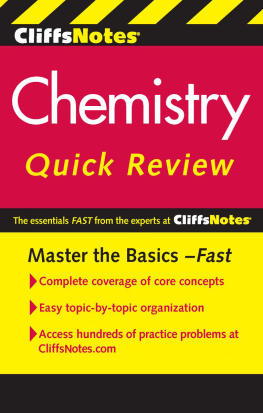




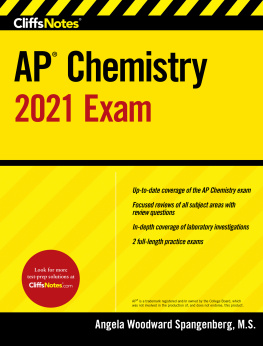


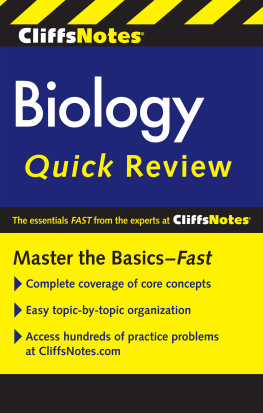

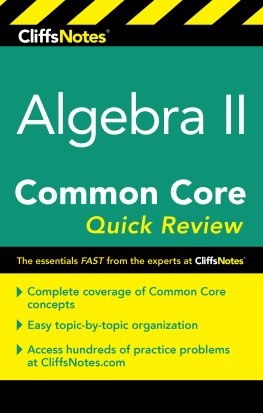
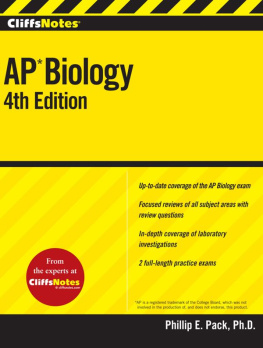


 Discovering the building blocks of all substances
Discovering the building blocks of all substances